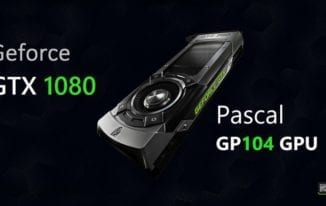
In the world’s top graphics cards, the Nvidia’s GTX 1070 and GTX 1080 are some of the top ranked options. Well, both are built for heavy-duty use, and quite on the higher end in terms of price. And despite the fact that they come from the same brand, they have a fair share of similarities and differences.
If you are onto upgrading your card, then these two come in as some of the best GPU cards to think about. But understanding what the difference between GTX 1070 and 1080 is can be tricky. Stranded on which to go for? Well, read on to find out.
The SpecsIn essence, these two cards are not that much different, but they have a fair share of disparities nevertheless. Both of them feature a similar Pascal architecture.
Thanks to the slimming down of its card design, smaller spaces can accommodate more transistors now. Then it deploys those on fins instead of using the horizontal planes, as was the case in previous designs.
Its new design has enabled Nvidia to squeeze-in millions more transistors than there were in previous GPUs.
And it all fits within significantly tiny silicon bits. Better yet, the design allows for a better electricity flow, giving the card better performance while taking on far less power.
But What are the Differences?In essence, it becomes clear that these graphics cards are similar to an extent. So what is the difference between GTX 1070 and 1080? On the bottom line, they are built for different uses. The GTX 1080, for instance, is best suited for videos such as 4K, and VR. The other one, on its side, is not that great in 4K gaming as its cousin.
BandwidthAnother disparity between the two is the bandwidth. The GTX 1070 has less of this as compared to the 1080. The former packs in a 256 bit-bus, while the latter has a 320-bit bus.
Number of CUDA CoresOn the Cuda cores, however, the 1070 draws closer to its cousin. In this aspect, 1070 has 1920 Cuda cores, but the 1080 comes with 2560 ones.
Clock SpeedFor the clock speed, 1080 also takes the lead, with 1556 MHz, while 1070 comes in closely at 1442 MHz speed. Another slight difference between these two is the boost clock. GTX 1070 lags behind on this one, again, with 1683, as GTX 1080 stays ahead with 1733.
Thermal Power DesignThe thermal power design (TPD) also differs between the two. On its side, the 1070 packs in 150W, while GTX 1080 comes with a higher score at 180W.
What about Performance wise?
Here’s yet another aspect in which the two cards display a range of differences. Although GTX 1070 will get the job done with less-demanding 4K games, it might affect your other settings. Nevertheless, for the 1440p, it can prove efficient enough.
If you want a card that packs in the real punch, then GTX 1080 has something for you. It takes 4K games on a stride. So you can count on it if you are looking for high resolution but don’t want to sacrifice the frame rate. But you still need to make sure your setup is ideal, lest, the difference can be negligible.
To be precise, the 1080 is built to take on virtually all you have to throw at it. The 1070, on the other end packs in lesser punch, and might mean a little compromise on a few aspects. But both of these cards are on the higher end of GPUs and have what it takes to raise your gaming a notch higher
And now, onto the PriceWith a virtually tangible difference in several aspects, you can expect the price to vary too. And as you can tell so far, the GTX 1080 is most likely to cost more than its GTX 1070 counterpart is.
Well, that guess holds true, as you will need to dig deeper into your pocket for this card. The higher performing 1080 will cost you around $550, which is worth, especially considering what it can do.
But if budget is not on your side, then you can settle for the GTX 1070. Still, be sure that you are not settling for less. Going for $400, this card still has what it takes to make it worth the cost. Above all, it offers an ideal option for gamers who don’t have deep enough pockets to go for the 1080.
What Card is Best for you?That said and done, here comes the decisive moment. If you take on GPU-intensive tasks, then the GTX 1080 is definitely your best bet. But if you can do with a little compromise on the framerate, then you can try the GTX 1070. Apart from the performance, the cost is yet another determinant that sets the bar for buyers’ decision.
For those who don’t have enough funds to put on the line, the less costly GTX 1070 would still be an ideal pick. If you are willing to push further, then dig deeper into your pocket for the high-performance GTX 1080.
At the end of it all, what is the difference between GTX 1070 and 1080? Well, to put it into perspective, the main disparity between the two is all about the structure and performance. Despite sharing a lot in the architecture, these cards stand out with their diverse specs and what it delivers.
To make the right decision, you need to hinge on priority in your gaming. But affordability also comes in as a major determinant. So, go for the one that best fits your preference, but for a card that offers top-of-line bang, go for the GTX 1080.
Related to Computers Laptop Price in Nigeria Cheap Laptops Best Laptops Computer Monitor Prices Dell Laptops Dell Laptop Prices HP Laptop Prices in Nigeria Dell Laptops Deals Best Laptops for StudentsThe post What is the Difference Between GTX 1070 and 1080? appeared first on Nigeria Technology Guide.

With job growth expected in the professional services industry, accounting practices are under pressure to compete in the war for talent, working hard to attract new, top-notch professionals – and also to keep their current employees, a charge that’s proven difficult
Indicative of the new wave of opportunity in the industry, professional services such as accounting ranked among the highest in terms of staff turnover in 2017, according to an examination of LinkedIn data drawn from the site’s half-a-billion international users.
As fear of a talent shortage looms, employing the right people with the right mix of skills, and providing a culture that allows them to thrive, will be the key to the success of any accounting firm.
Here are three key steps that accounting firms can take to attract and retain the industry’s top talent:
Acknowledge industry changes with both current employees and candidatesOpenly acknowledging and embracing changes in the accounting profession can help firms to attract and retain the next generation of top accountants.
Now, accounting professionals serve as both a financial resource and a trusted strategic advisor—it’s officially time to say goodbye to the stereotype of accountants as desk-bound number crunchers.
With this in mind, it’s important to position your firm as one that understands and supports the accountant’s changing role.
In communication with both current employees and job candidates, it’s essential to be transparent about how the accounting profession is evolving.
Your employees may be apprehensive about the redefinition of their role, so opening the door for candid conversations can help clear the air of any misconceptions and will establish a relationship built on trust.
With candidates, make sure they have a firm understanding of the skills needed to thrive as a modern accountant by dedicating significant time discussing elements of their job function that are newer to the industry.
What’s more, by discussing how tech innovation has transformed the industry with candidates, accounting firms will demonstrate that they have adopted a technology-first mindset, attracting digital savvy employees and putting the firm on par with their blue-chip competitors.
In a world of digital dependency, this will go a long way towards attracting and retaining digital-first colleagues.
Define success and equip your staff with tools to get thereToday, accountants need a wide range of skills to succeed, with more emphasis on proficiency in personal communication and technology than ever before.
As new skills gain prominence in accounting, like presentation, project management and relationship building, accounting professionals are coming to terms with what it takes for an accountant of the future to be successful, carefully evaluating how they fit into the bigger picture of this newly redefined industry.
One of the most effective ways to attract and retain top talent is to provide a clear career development and training path—such as the route to Partnership.
A challenge many accountancy firms come across is that middle-level employees often get disillusioned as they progress. With becoming a Partner being seen as the ultimate goal, providing colleagues a clear and achievable route to this milestone—and carrying out regular reviews to monitor their progress along the way—could be the golden ticket to retaining valuable team members.
Once you clearly define an accountant’s success, see to it that your employees have access to the tools needed to get there. For example, with technology adoption taking place at a faster rate than ever before, the accountants of the future will be much more comfortable with technology than their predecessors.
Invest in retraining to help employees feel confident about doing business with new technologies like artificial intelligence and bots. Alternatively, for those more comfortable with technology and delivering financial insight as opposed to building client relationships, consider developing a mentor program, pairing individuals with those who seek guidance.
In the hiring process, be particularly mindful of the varied skill-set needed to succeed, and consider looking outside of the standard talent pool—beyond the traditional accountancy qualifications—to build a firm with the right mix of expertise.
Ultimately, if organizations don’t set their employees up for success, and outline exactly how they can progress, they risk losing them to firms that do.
Ensure your workforce feels valued and motivatedThe key to success for any accountancy firm will be employing the right people, with the right mix of skills, and providing a culture that allows them to thrive.
Focus on bringing digital knowledge and expertise into the practice, along with strategic and critical thinking, and create the right company culture to deliver an engaging employee experience.
To promote positive company culture, communicate openly with employees to get a sense of what would motivate them in the workplace. Almost half (47 percent) of respondents to a Sage workforce survey said they had never been asked by their employer how they can improve their work experience.
Meanwhile, 66 percent of respondents to the same survey believe being valued and recognised is the most important aspect of employment. What’s more, positive workforce experiences are important to 92 percent of employees, which highlights how imperative it is that firms take this into account if they want to hire the best and brightest – and keep them.
By providing clear development opportunities, focusing on the needs of employees and looking to recruit a new range of skills, firms can put themselves in the best position to attract, retain and develop the right talent, now and in the years to come.
This article was written by Jennifer Warawa, Executive Vice President of Partners, Accountants and Alliances at Sage
Related Topics Sage One Sage 50 Best Accounting Software Sage Business Cloud Accounting Sage Pastel Best Online Accounting Software Peachtree Accounting SoftwareThe post Attracting and Retaining the Accountants of the Future appeared first on Nigeria Technology Guide.
